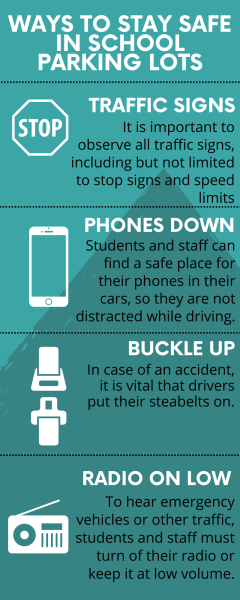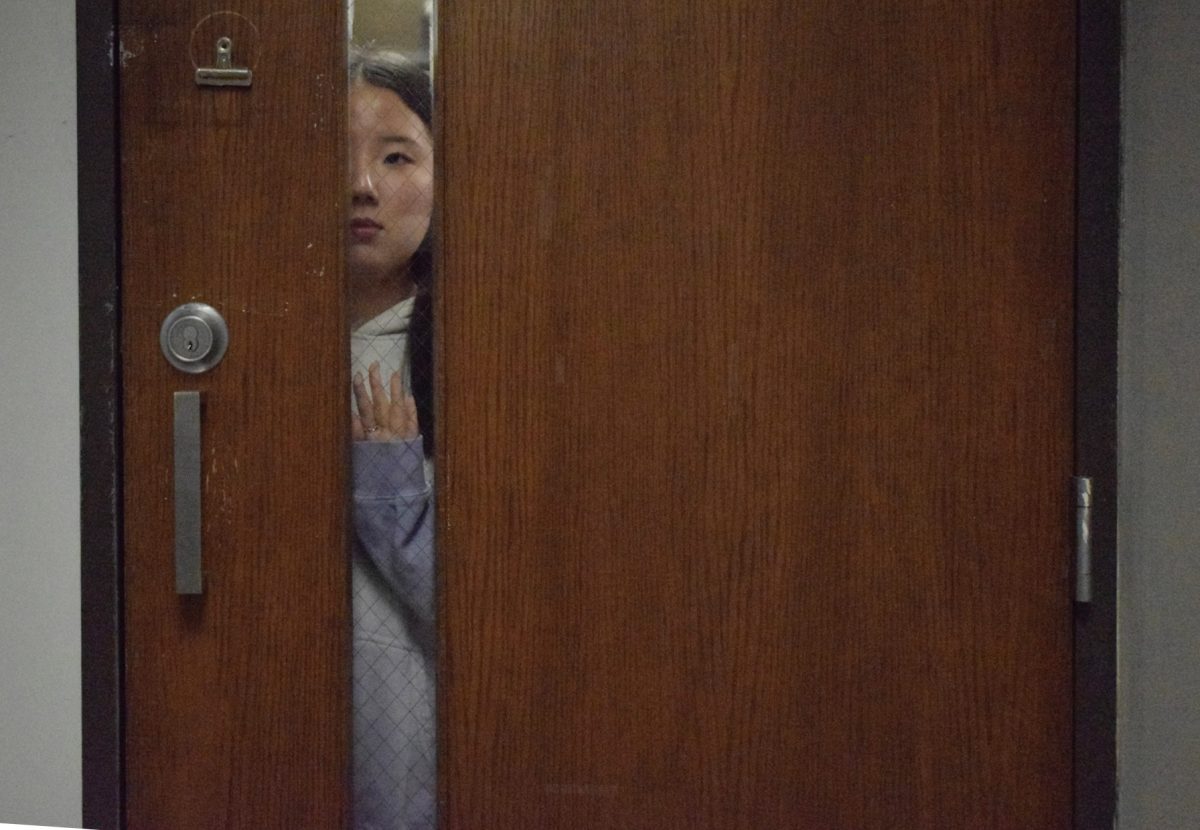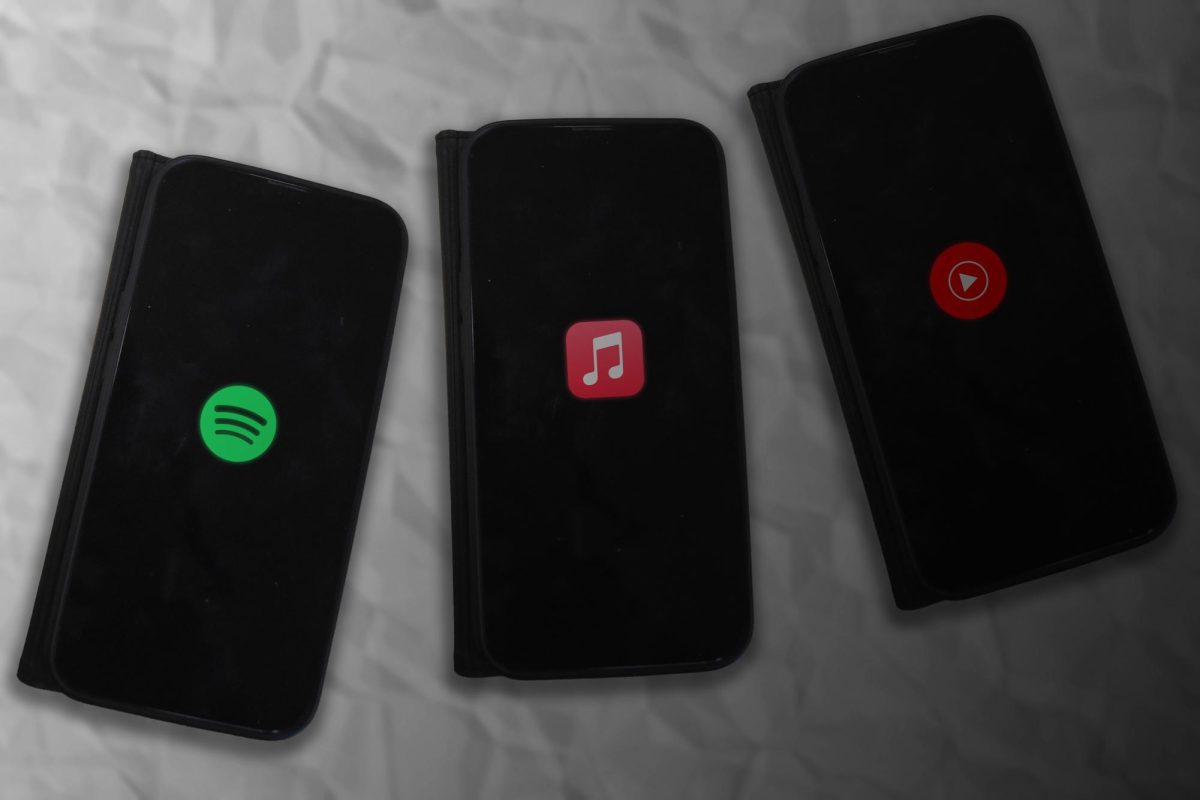Hundreds of cars and students bustle out of the school as the day ends. Cars are bumper to bumper as each driver rushes to leave. Suddenly, thereтАЩs a thud and a bang, and junior Ava McLeodтАЩs rear bumper falls completely off her car following a crash. In shock, she surveys the damage.
тАЬI was walking up to my car and saw a giant black piece of metal. [A classmate came down], and told me that he had hit my car. I thought тАШThat’s crazy.тАЩ How could anyone hit my car?тАЭ McLeod said. тАЬIt is so easy for kids to hit your car. I never thought about my safety until I was put in that situation.тАЭ
Teens between the ages of 16-19 are three times more likely to be involved in a fatal car crash compared to drivers over the age of 20. Furthermore, findings from a 10-year long survey show that 1,080 school-transportation accidents occurred between 2010-2019. At West, juniors and seniors are given an opportunity to drive to and park at school. They won’t be issued a ticket if they have a legible parking pass тАФ along with a registered car and license plate. However, many students misuse this privilege, driving rashly and allowing for accidents. If the very base of our society, the education system is unsafe, the time to act is now.┬а
Multiple distractions within school zones often make it difficult for students to be the most effective drivers тАФ some of the most pressing being phone and music usage. While schools are not directly responsible for this issue, they should not condone excessive car noise, which interferes with a studentтАЩs ability to drive safely. If an officer can issue a ticket for students who donтАЩt have a parking pass, they should be able to issue a ticket for those who have their phones out while driving, for it is a critical threat to student safety. This might mean spending extra money to hire more school resource officers. According to Pew Research, 43% of all 16 and 17-year-old drivers have admitted to phone usage while driving. Phones and media are a costly threat to driver safety; so, in order to ensure personal and general well-being, setting phones aside while driving must be a priority.┬а
Additionally, in Missouri, the Siddens Bening Hands-Free Law bans individuals from driving with an electronic in their hands. While the law became effective in Aug, 2023, police officers will not issue drivers citations until 2025. With the extra time before the law is enforced, districts should enact policies regarding phone usage since most do not surveil students for this issue. Students can take accountability by putting their phones out of sight while driving.
тАЬYou should stay off your phone [in the school parking lot]. You don’t need the radio blasting because not everyone needs to hear your music. [Students should] be able to hear an emergency vehicle trying to get around or another vehicle,тАЭ School Resource Officer Matt Paubel said.

As the end of the school day approaches, another critical concern arises. Because students are eager to leave school before the pickup and bus rush, it can lead to absentmindedness when backing out, moving with the flow of the traffic and wearing a seatbelt. Almost 840,000 car accidents occur each year just because blind spots are neglected, so students must ensure there are no pedestrians or cars in the way when backing out. Though most states have strict seat belt laws, student drivers still refuse to buckle up. In fact, in 2019, 43% of high school students reported not always wearing a seatbelt.┬а
Even if it’s uncomfortable, or drivers are in a rush to leave, seat belts are important for safety reasons. Not only do they secure the passenger in place, but in the case of an accident, seat belts prevent ejection and distribute the impact force, so a person is less likely to get injured or lose their life.
тАЬ[I would advise students to] slow down. We’ll all get out of here on time. There’s really no reason to speed through the parking lot, so take it slow,тАЭ Paubel explained. тАЬ[It is important to] watch for other students that are going to be crossing [and] stay out of the bus lanes because you never know what students are going to be getting on and off different buses. We’re all going to get out here at a reasonable time and going fast is not going to get you out of here 30 seconds faster.тАЭ
Within the school zone, students and staff must secure their cars. A click of a button can do so much to ensure protection from theft or invaders. However, locking cars is just the first step, there can still be risks when there is minimal surveillance or monitoring over a sector. After parking his car in the school soccer lot, senior Sam HuberтАЩs car was broken into and$120 was stolen from his personal fund.┬а
тАЬThere was glass everywhere and I had to repair it myself. The school doesn’t have cameras for specific liability reasons. I am so angry. I get free lunches, I’m not even rich or anything like that. A lot of people donтАЩt lock their doors, including me, but people really should,тАЭ Huber said
Although distressing, HuberтАЩs case was a rare occurrence. The school has faced multiple small crashes, but they are not liable for any property damage to students. The premises have motion-detectable security cameras to find any suspicious behavior near the school, but there are no cameras further out on the property due to difficulty obtaining permission.┬а Additionally, according to sections 35-37 of Senate Bill No. 995, schools must report any incidents of first and second-degree burglary and first-degree robbery to law enforcement agencies. After the report is created, the issue is out of both the schoolтАЩs and the studentтАЩs hands. Also, under the law, schools do not need to report crashes and are not liable for any damage created.
тАЬThe cameras are predominantly focused on the entrances and exits of our building to enhance student and staff safety. [In] parking lots, where students are not frequently spending time, is not somewhere where we have a lot of video cameras. It’s also a large logistical challenge to have cameras that are outside of campus, whereas in the building, there [are] lots of walls and different things you can put cameras up on,тАЭ Principal John McCabe said.┬а
Although it may be difficult, the school should increase the range of its security cameras. Especially when so many accidents occur, increased surveillance can help schools safeguard their students within parking lots. Furthermore, slogans like тАЬBuckle Up, Phone DownтАЭ from the Missouri Department of Transportation can encourage student safety, not just for pedestrians outside of the car, but passengers riding inside.┬а
тАЬThe most important thing to remember is to follow all of our road signs, including speed limits. People need to follow driving protocols for things to be safe. When you break the law or break a rule, you are putting yourself and others at risk of a crash and accident,тАЭ McCabe said. тАЬThere’s a reason that we have a very low-speed limit on campus тАФ because we want everybody to get home safely.тАЭ
Schools can ultimately act as they desire, but in the interest of student safety, administers should consider improving lackluster surveillance around campuses.
Every day that schools donтАЩt take action to protect the safety of student drivers is another day that students feel unsafe on the premises where they receive education. Additionally, students should take action within their own cars тАФ they can limit music, put aside their phones, and abide by traffic rules. Both students and schools must make effective choices and enforce strict policies to ensure the safety of everyone on their grounds.┬а
тАЬItтАЩs important to be a good driver because you are not only trying to stay safe for yourself but for everyone around you. Your life is at risk every time you get into the car, so just make sure to follow the rules and watch out when you are driving,тАЭ Afentoullis said.

![Senior Thalea Afentoullis backs her car into the senior parking lot. Though Afentoullis has two years of driving experience under her belt, she often feels concerned about her safety in the school zone. тАЬFrom my experience, whenever I try to get down to the pit, [the junior parking lot], after school, I have to be very conscious. [Students] whip [their cars] out of their spots. The school could do a much better job by separating the timings at which students can leave because most [car crashes] happen after school when everyoneтАЩs rushing to get out of the line,тАЭ Afentoullis said.](https://pwestpathfinder.com/wp-content/uploads/2024/04/68467-e1712933168328-1200x789.jpg)

![Sitting courtside before a junior varsity girlsтАЩ tennis match, senior Tanisi Saha rushes to finish her homework. Saha has found herself doing academic work during her athletic activities since her freshman year. тАЬBeing in sports has taught me how to stay organized and on top of my schoolwork. [With] a busy practice and game schedule, IтАЩve learned to manage my homework and study time better,тАЭ Saha said.](https://pwestpathfinder.com/wp-content/uploads/2025/11/DSC_0022-1200x800.jpg)
![Sophomore Maryem Hidic signs up for an academic lab through Infinite Campus, a grading and scheduling software. Some students enjoyed selecting their responsive schedule in a method that was used school-wide last year. тАЬI think it's more inconvenient now, because I can't change [my classes] the day of, if I have a big test coming and I forget about it, I can't change [my class],тАЭ sophomore Alisha Singh said.](https://pwestpathfinder.com/wp-content/uploads/2025/10/DSC_0012-1200x801.jpg)
![Senior Dhiya Prasanna examines a bottle of Tylenol. Prasanna has observed data in science labs and in real life. тАЬ[I] advise the public not to just look or search for information that supports your argument, but search for information that doesn't support it,тАЭ Prasanna said.](https://pwestpathfinder.com/wp-content/uploads/2025/10/DSC_0073-2-1200x800.jpg)
![Junior Fiona Dye lifts weights in Strength and Conditioning. Now that the Trump administration has instituted policies such as AI deregulation, tariffs and university funding freezes, women may have to work twice as hard to get half as far. "[Trump] wants America to be more divided; he wants to inspire hatred in people,тАЭ feminist club member and junior Clara Lazarini said.](https://pwestpathfinder.com/wp-content/uploads/2025/05/Flag.png)
![As the Trump administration cracks down on immigration, it scapegoats many immigrants for the United StatesтАЩ plights, precipitating a possible genocide. Sophomore Annabella Whiteley moved from the United Kingdom when she was eight. тАЬItтАЩs pretty scary because IтАЩm on a visa. When my visa expires next year, IтАЩm not sure whatтАЩs going to happen, especially with [immigration] policies up in the air, so it is a concern for my family,тАЭ Whiteley said.](https://pwestpathfinder.com/wp-content/uploads/2025/05/DSC_0077-7copy.jpg)
![Shifting global trade, President Donald TrumpтАЩs tariffs are raising concerns about economic stability for the U.S. and other countries alike. тАЬ[The tariffs are] going to pose a distinct challenge to the U.S. economy and a challenge to the global economy on the whole because it's going to greatly upset who trades with who and where resources and products are going to come from,тАЭ social studies teacher Melvin Trotier said.](https://pwestpathfinder.com/wp-content/uploads/2025/05/MDB_3456-1200x800.jpg)



![Some of the most deadly instances of gun violence have occurred in schools, communities and other тАШsafe spacesтАЩ for students. These uncontrolled settings give way to the need for gun regulation, including background and mental health checks. тАЬGun control comes about with more laws, but there are a lot of guns out there that people could obtain illegally. What is a solution that would get the illegal guns off the street? We have yet to find [one],тАЭ social studies teacher Nancy Sachtlaben said.](https://pwestpathfinder.com/wp-content/uploads/2025/01/DSC_5122-1200x800.jpg)
